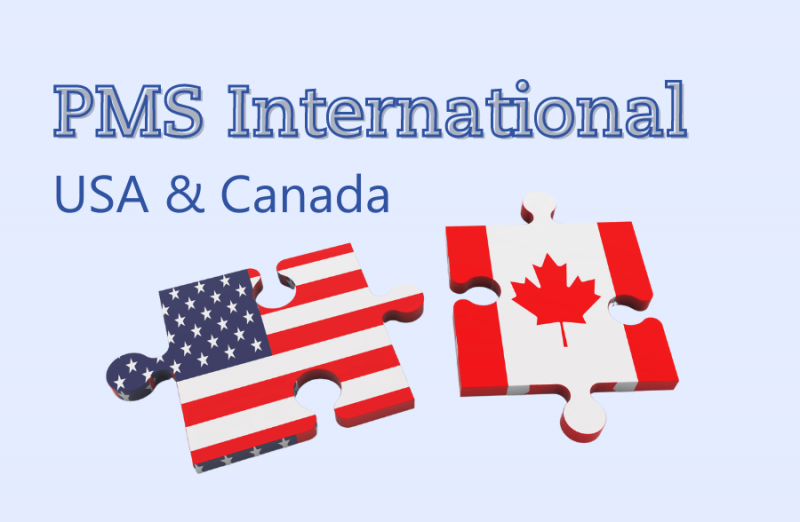Post-Market Surveillance International: USA and Canada
17/11/2023
Do you have any questions about the article or would you like to find out more about our services? We look forward to hearing from you!Make a non-binding enquiry now
Post-Market Surveillance (PMS) has become more or less routine for manufacturers of medical devices placed on the EU market since May 2021. The requirements for the PMS system under Regulation (EU) 2017/745 (MDR) and Regulation (EU) 2017/746 (IVDR) have increased compared to the Medical Devices Directive 93/42/EWG (MDD) and the In Vitro Diagnostic Medical Devices Directive 98/79/EG (IVDD) and there is more intense scrutiny by Notified Bodies on how information is collected from the market, analyzed, and evaluated.While many manufacturers have been focusing on the European PMS requirements lately, it is necessary to stay informed about global PMS requirements. In this article, we want to sharpen our focus on international requirements, specifically the situation of PMS in Canada and the United States, to show how they differ from those of the MDR and IVDR.
Best Regards
 Björn-Carsten Schüre
Björn-Carsten Schüre
A look across the pond
Continuous reporting requirements: Canada versus the EU
Both Canada and the EU have recently increased their Post-Market Surveillance (PMS) requirements and now mandate periodic reports summarizing PMS data, analyses, and conclusions. However, while the EU stipulates a Periodic Safety Update Report (PSUR) or PMS report (depending on the risk class) for all medical devices covered under the MDR or IVDR and for all "legacy devices", Canada only requires a "summary report" for medical devices that require a Canadian medical device licence, i.e. for Class II, II, and IV devices.Both the European Union and Canada mandate the preparation of comprehensive reports evaluating the impact of new information on the benefits and risks of medical devices and in vitro diagnostics (IVDs). Such information may include a change in the risk profile, for instance, arising from new or emerging risks, or a stated benefit that has not been achieved. Both the EU and Canada provide useful guidance to assist in the preparation of these reports, namely the MDCG 2022-21 and the "Guidance on summary reports and issue-related analyses for medical devices", respectively.It is important to note that Canada has not tied the reporting period to the anniversary of the medical device licence. Consequently, it is possible to align the Canadian "summary report" with the preparation of the PSUR, for example. This alignment reduces the amount of work needed to produce the reports since there is a natural overlap in the PMS datasets examined for each report.Of course, this alignment may be difficult if the reporting periods for the risk classes are different between the EU and Canada. The maximum duration of the reporting period in Canada is two years for Class II medical devices and one year for Class III and IV medical devices. In the EU, the PSUR should be updated every two years (or as required) for Class IIa devices and at least annually for Class IIb and III medical devices and IVDs in risk classes C and D.The "522 order" as the key to reporting obligations in the USA
For the US market, the counterpart to the post-market surveillance requirements of the MDR can be found in "21 CFR 822", which implements Section 522 of the "Federal Food, Drug, and Cosmetic Act" (FD&C Act). This guidance (Postmarket Surveillance Under Section 522 of the Federal Food, Drug and Cosmetic Act) assists medical device manufacturers who are subject to the Section 522 Post-Market Surveillance Order "522 orders" by providing an:- overview of Section 522 of the FD&C Act,
- information on how to fulfill the requirements,
- recommendations for the format and content of the PMS plan and report, and
- updated categories of the monitoring status.
- Failure of the product would be reasonably likely to have serious adverse health consequences.
- It is expected to have significant use in pediatric populations.
- It is intended to be implanted in the body for more than one year.
- It is intended to be a life-sustaining or life-supporting device used outside a device user facility.
Conclusion
Global PMS is a topic that is likely to grow in global importance.There is a growing trend towards country-specific regulations that must each be carefully implemented. However, despite the different requirements, all regulations share a common goal: ensuring the safety and performance of medical devices and in vitro diagnostics (IVDs) in the field throughout their product lifecycle. A strategic, coordinated approach to fulfilling international PMS requirements is the right way to maximize benefits, add value, and reduce complexity.We hope that this summary will assist you on your international journey, particularly as the first reports are already required both in Canada and the EU! We would be happy to support you in all areas of Post-Market Surveillance (PMS), according to your specific needs and requirements.Best Regards
Our blog posts are researched and created with the utmost care, but are only snapshots of the regulations, which are constantly changing. We do not guarantee that older content is still current or meaningful. If you are not sure whether the article you have read on this page still corresponds to the current state of regulation, please contact us: we will quickly place your topic in the current context.

Regulatory Affairs & Technical Documentation



